

Numb-nuts
-
Content Count
1,995 -
Joined
-
Last visited
Posts posted by Numb-nuts
-
-
Thought it was about time I added some of my horrific discoveries
This one where the client was too mean to pay someone's time to remove the old camera
I'm sure the installer was being sarcastic when he did this..... this
And this one where no attempt is made at all to keep the cables tidy is made.
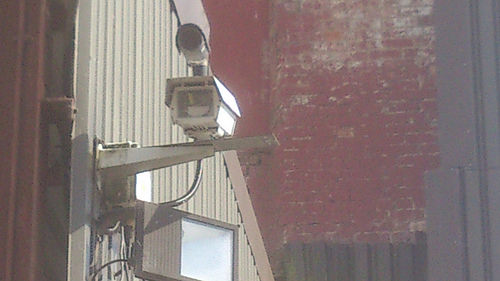
And the dildo that installed this used a single pair for video and a single pair for power and cut the remaining pairs away?????????
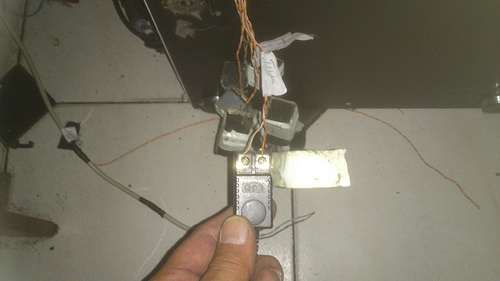
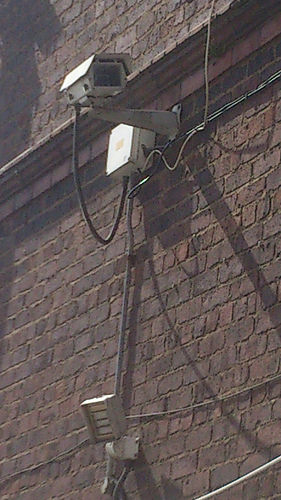
And this one is more common that I care to remember, surprisingly common condition though
I arrived and was told this is where the CCTV will go (Oh Boy)
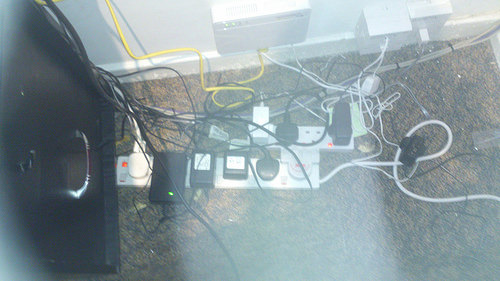
-
Frankly the installer should have done all this for you for that price. Well done on recognising that installation is not simply slapping a few wires in. I am pleased to hear your system has been a success you approached it in the right way so you deserve to enjoy your system well done.
-
What settings did you put for the address in the meyEye app? It should have been the Hostname you created in No IP and it has to be meticulously entered.
Have you checked your DNs account to see if NO IP correctly records your current public IP? It's a long lease period with Virgin Media but nevertheless you can't assume your public IP hasn't changed (although unlikely)
The Procedure for port forwarding a Superhub as follows
1. log in and go to advanced settings. Username "admin" Default password "changeme"
2. Disable UPnP
3 Having set a static LAN address for your DVR, go to DHCP in advanced settings and reserve your DVRs IP.
You can either leave the DVRs IP ststic or DHCP now as the router will always assign that IP to your DVR
4. Now you can open and forward your port to your DVR's IP address apply
5 Return to your router's advanced settings and enable UPnP
Follow this procedure exactly, or you will have problems, if you didn't you can reset your Superhub and start from scratch)
Now go to yougetsignal and test your ports are open. Using this site proves your ports
are open from outside your own network. Don't worry your DVR is still password protected (if you set a password)
If that doesnt work then you will need to check your settings from start to finish are meticulous.
As you know computers don't respond to spelling at all. Never assume you entered settings correctly until they prove themselves correct
Good Luck
-
I'm just a novice though so...
you should probably just hire someone, they could answer these questions a lot faster in person by being able to see what is actually there etc.
see...?
-
Have you tried the acti website yet.
-
-
You don't need advice, you need a consultant,,, best of luck
-
I'm not sure how to react to that ha ha ha ha
-
I always try to price out cable by the roll. If I have some leftover then great but if I run over a little or for some reason the customer wants it. I have all ready figured it into the price. I have priced out systems line by line and just a bottem line number and don't think it makes much difference. If the customer is a jerk they are going to try and beat you up on price at any rate. We had a potential customer that as a matter of how they did business was to always find something wrong and demand a discount. This was from shippers and raw material suppliers and service people. we ended up not doing anything for them.I still believe it belongs to the installer and they have the right to recover it.
Selling something that doesn't belong to you is theft and if I buy from you way cheaper than normal knowing it is not yours to sell then I would be guilty of receiving stolen property which is why I didn't bid on the item regardless how
tempting it was.
Man I'm in the security business I can't afford to be involved in any doubtful transaction
not to mention its the wrong thing to do.
Oh I am convinced it would be theft and so are ebay, they removed the item when it was re listed by the same seller.
-
Not usually the case with Virgin Media.
You may have incorrectly entered your DDNS address either in the DVR settings or on your device.
Try entering your current public IP address in plave of your DDNS hostname and if that connects you made an error entering your DDNS hostname either at the DVR or the device.
-
Its a bit early for that. AHD has literally been on the market a few weeks so far as I am aware.
for the uninitiated, AHD (analogue High Definition)
-
Not Indoors Luke, unless of course there is a sprinkler system LOL and you plan on having a crafty smoke.
Actually he's absolutely correct, even indoors, a drip loop looks very professional and outdoors its a the only way to guide stray water away from entering the box.
Shows the principle of a prip-loop
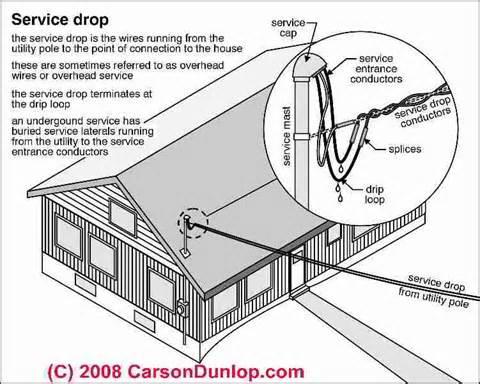
-
Ask local electrician's and competitors where they buy their supplies. Here in the UK we have what are termes eecrical wholesalers who have two prices, a retail price and a trade price usually about 20-25% less. We also have places like B & Q similar to your Home Depot.
Don't assume such places will be too expensive, sometimes it's the only option when you need the correct item quickly, better to do the job and earn a little less than to muddle through with unsuitable materials. I use a holesaw to cut my holes to 19mm and enlarge the holes with a conical step cutter as this gives a nice CLEAN edge to the resulting hole. The holesaw reduces the potential extra mess and is faster and more accurate to center the hole. I start with a 3mm pilot.
Typically I use 2 x inch glands and 1 x 3/4 inch gland. The smaller is for the local power cable and the larger are for upto four cat5e-pe exterior grade cables or whaterver cable you use from each camera. I also have a smallish JB at each camera to house the connectors and balun where used. Schneider also do great junction boxes and I remember those were available in the US when I was there.
The best location for these type of junctions is indoors under cover because who wants to work at a junction box when it's raining and when it becomes necessary to work at the box, better to be under cover if possible. Despite these boxes being weather resistant think ahead and keep it under cover even if only under the eaves of a property.
-
For larger boxes, you put on a layer of masking tape and mark up your own holes 3/4inch or 1 inch 20mm or 25mm and drill, insert Glands not grommets as grommets are for blanking holes and passing through panels.
Locate the box central to 4 or 8 cameras and cables go to the box. You can either joint your coax there or use balun to balun with cat5 back to the DVR and a local power supply inside the JB with a DC splitter 4 or 8 way .The box will need to be IP65 minimum preferrably IP67 rating and be placed where unauthorized persons cannot interfere with it. Silicone over the mounting holes you have to drill. These boxes are about £10 - £15 for decent quality IP rated boxes.
Here is one that already has grommets provided. I would NOT use this as the grommets harden and let in water later. The fewer holes in the box the better it's likely to stand upto adverse weather Wiska make excellent (but pricey) boxes.
This one is a nasty cheap Chinese import and won't stand upto the weather as the grommets will harden and fracture eventually
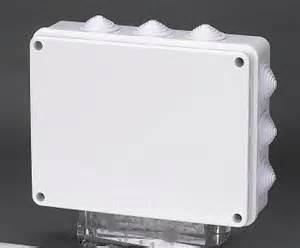
and below a great IP rated junction box by Gewiss I use these regularly and insert glands instead of grommets
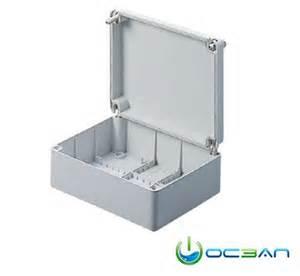
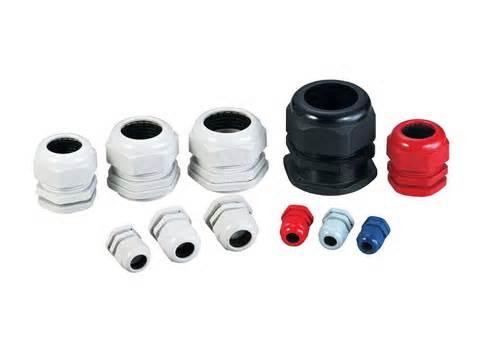
-
WHERE ARE YOU?
Who is your target Market?
What level of installation (are you prepared to do,a factory site with 32 or 64 cameras or just smaller jobs until you have more experience.
Can you finance such a job?
Do you have Liability insurance and commercial vehicle insurance? i.e traveling to more than one place of work.
What level of installation experience have you?
Have you decided upon an hourly rate and min. charge?
Have you sourced your trade suppliers? They will be able to assist you on typical mark ups.
What is going to be your advertising budget (that has to be paid for by someone) ?
What is your pricing policy? At first you mmay need to work cheaper but get a reputation for cheap and thats all you'll get is bargain seekers who will not appreciate your reputation (once you have earned one)
When you have answers to all these then you can start to work out what being in business is costing you before you make a profit and what you should charge to break even or can you achieve a profit in your first year?
-
A generic Chinese brand is Folksafe , I have found these are very good, available in the UK under the brand name Balun King from CCTV Direct These are all more expensive but IMHO worth every extra penny.
There's also Muxlabs offering but they ARE expensive and I only use those with top of the range equipment where the equipment value is higher and warrants it. You wouldn't put retread tyres on a Rolls or Mercedes would you?
Sorry about the crossfire, just do what I do ignore the snipes or petty comments. Its a shame because he often has some very valid things to say.
-
Yet another version of HD CCTV......oh brother where will it all end?
At this rate this poor guy is going to have a nervous breakdown.
-
-
mmmmm, sound like MR Know it all needs to make a comment here........
-
Why did you use Cat6 and not cat5 ?
Good way of using a single cable for both power and video but how have you terminated the DC pairs?
The problem sounds like a power supply issue. Remove the power from one camera at a time and see if
one of them is the culprit because it sounds like one or more of the power lines is introducing a ground
loop I use the identical wiring convention to you, and never suffer the same issue.
Measure the voltage at each camera from the DC supply cable and it should be within the range of around 12V + or _ 10%
-
IMHO its transitional technology
-
I would go through the wall just above the skirting but if you have the time to remove the skirting and replace them after that again would make a neater job.
'My wiring convention' is striped conductors=pos + and solid colours =Neg - ground.
If you follow this convention for both DC Power and Video signal you won't get it wrong.
Don't buy cheap nasty baluns as some of them are real trash, you'll know by the price.
Think about the reduction in wiring and how much tidier it will be, thats a real bonus.
Take care when handling the cable, remember the cable has solid conductors so if one fractures
that the end of that conductor. With 'passive baluns', you can use a single pair for video upto
around 300m without any real degradation of signal.
-
-
The difficulty with ready made cables are that by using them the holes you need to make to go through a wall, or soffit or a ceiling will all need to be about around 22mm. Some of those ready made cables are strong enough but a lot of them will be destroyed by pulling them through holes or conduit. If you use cat 5 and baluns you only need to make the holes as big as the bare cable 6mm and abot 12mm for a couple of cables. Choose a single pair for the video and split the other pairs into striped and solids and use those for the 12vdc and use screw on power connectors at the ends Female at the power supply end male at the camera end.
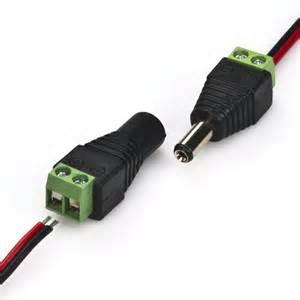
Its a nice touch hiding the cables behind the rainwater-downpipe, you could just use PVC conduit which is significantly cheaper than corrugated conduit and easier to pass cables through. Go into your junction box at the bottom face rather than the top face as water might get in. You can bend PVC conduit using a kettle of water and either a bending spring inside it or fill the bend with sand before bending.
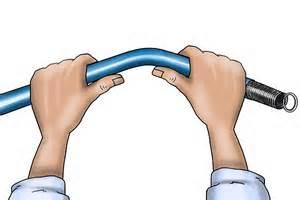
Bending PVC conduit with a bending spring You may want to use you knee rather than strain your thumbs this way but the principle is the same. If you have a hair dryer that would help to soften the conduit before bending but don't let the Mrs catch you
One word about your route through the loft, you can do this it's quite valid but better to go through the wall direct into the room if possible at skirting height. Its very untidy coming into the room through the ceiling and making it appear tidy is not going to be too easy. I have a feeling you are going to make a nice tidy job, good luck.
You need to use pure copper,solid conductor Cat5e DON'T buy CCS or CCA has to be solid copper and you could do away with the conduit if you use outdoor rated cable Cat5e PE


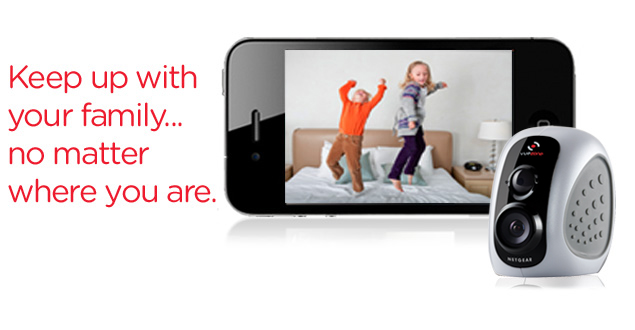
More for the Installation Hall of Shame
in Test Bench
Posted
A spinkle of parmesan and you're all set for dinner.
The most puzzling thing about my second picture is that it worked flawlessly for 5 years according to my client?